#16th-century Flemish painters
Explore tagged Tumblr posts
Text
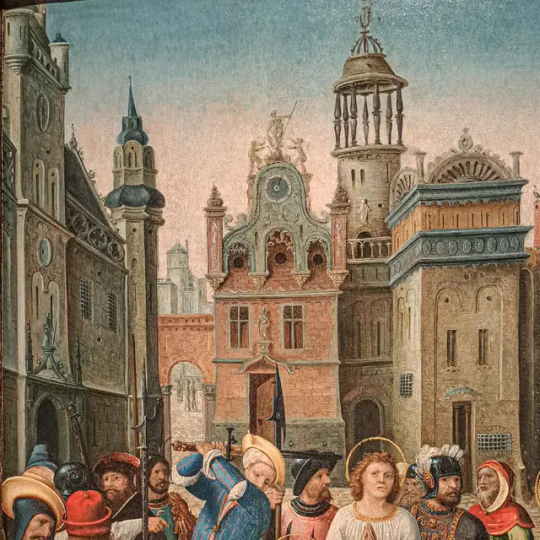
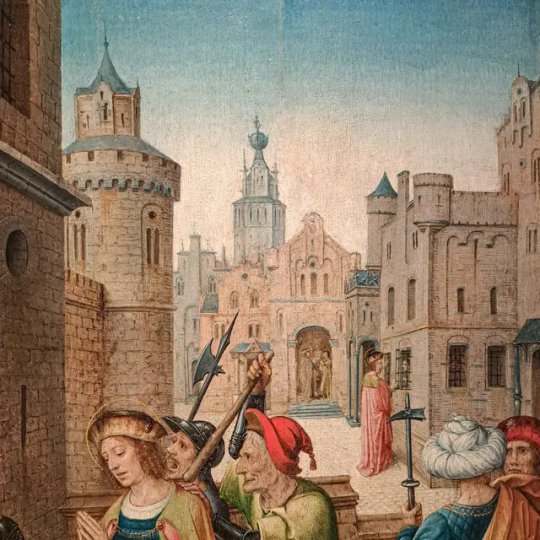
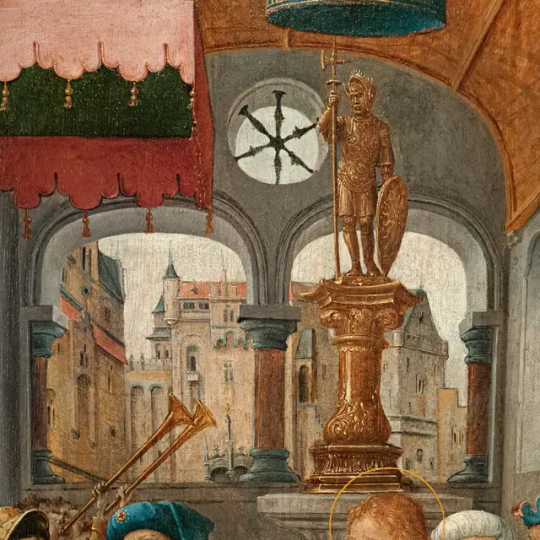

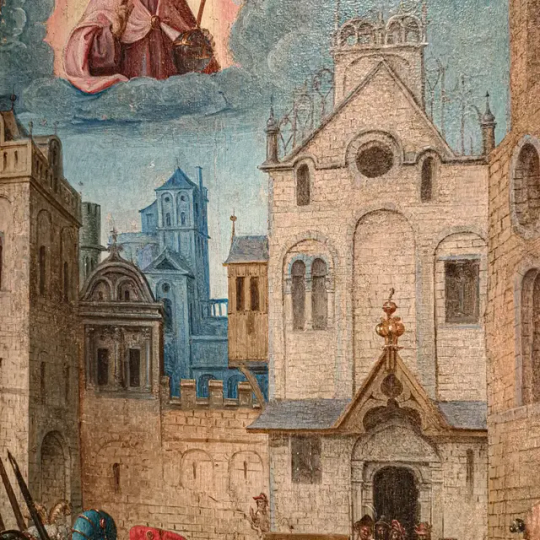
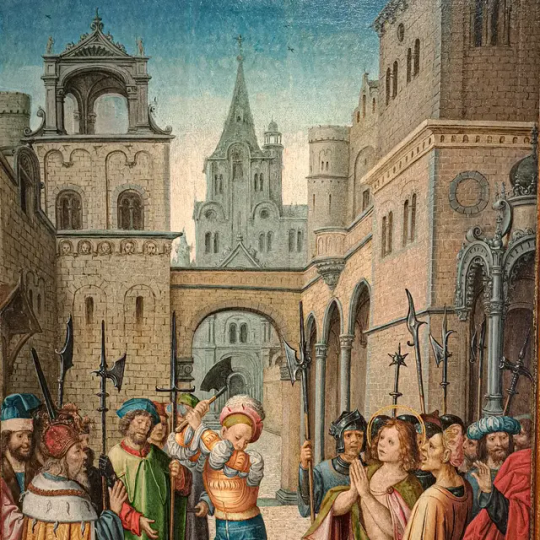
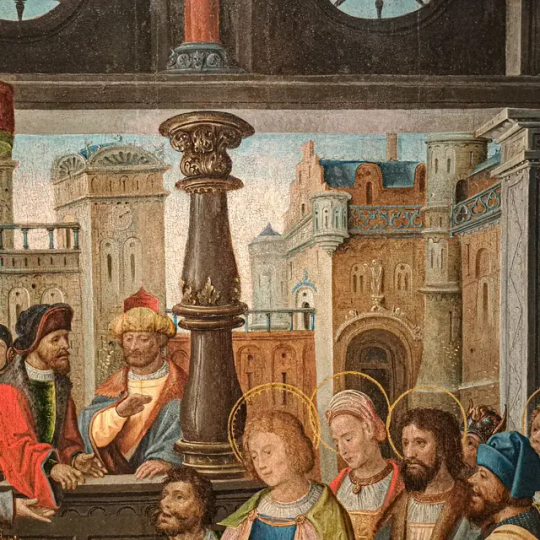
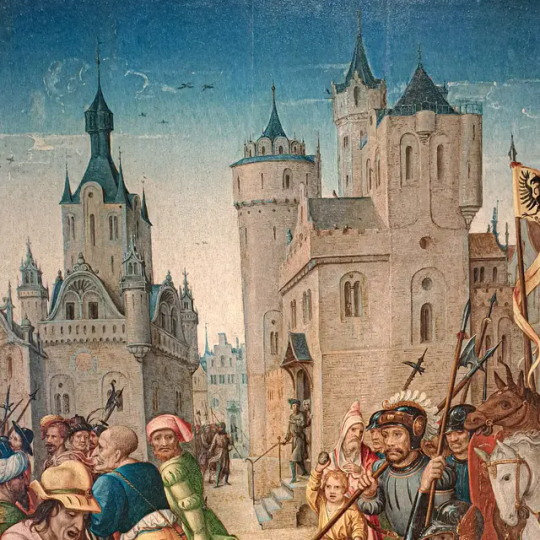
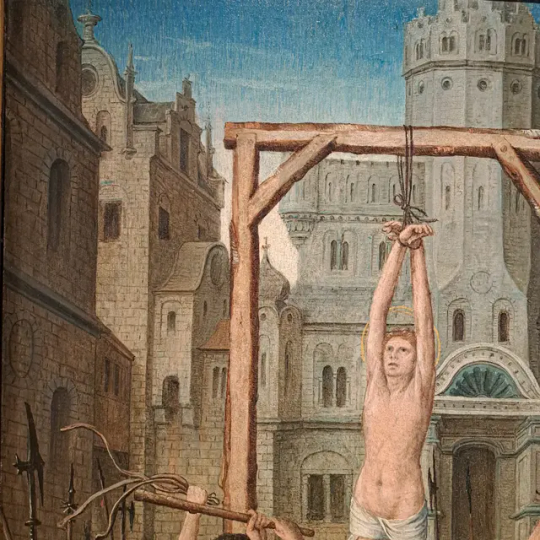
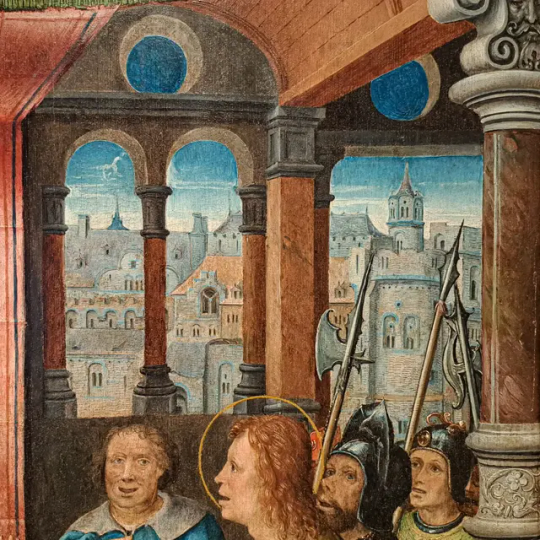
Details of architectural elements of late 15th and early 16th century flemish paintings (that were on display in museum Hof van Busleyden in Mechelen, Belgium)
The fantastical architecture blending flemish, brabantine and some northern italian features. A place where the late medieval flemish traditions and italian renaissance features meet.
As typical for flemish art; the details and backgrounds are as interesting as the subjects on the foreground.
#europe#historic buildings#architectural history#belgium#art history#flemish#flemish art#renaissance#renaissance art#renaissance architecture#flemish painter#paintings#painting#peinture#peintures#arte#artwork#art#16th century#historical interior#fine art#malerei#architecture#buildings#old building
98 notes
·
View notes
Text
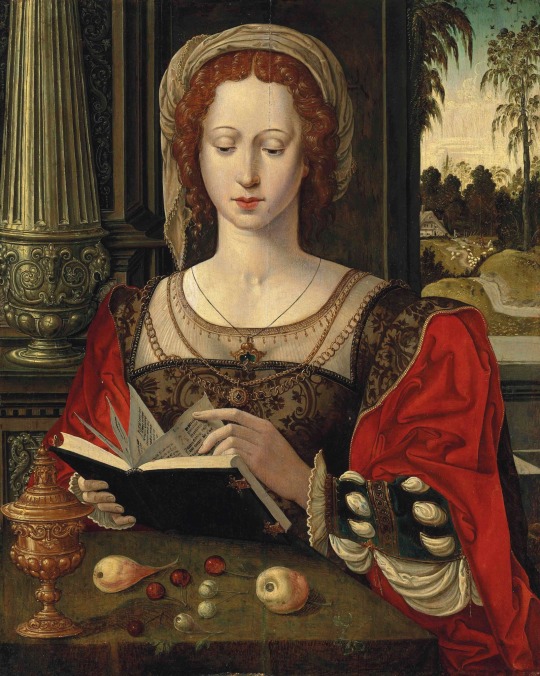
The painting Saint Mary Magdalene reading, at a table with fruit and a golden tazza, by the Master of the Parrot, a group of Flemish painters, active in Antwerp, in the first half of the 16th century.
#art#artworks#artwork#paintings#painting#16th century#early 16th century#16th century art#flemish painters#flemish painter#the master of the parrot#the master with the parrot#religious art#christian mythology#mythology#mary magdalene#women in art
54 notes
·
View notes
Text

Odysseus and Circe
Artist: Bartholomäus Spranger (Flemish, 1546-1611)
Date: 1586-1587
Medium: Oil
Collection: Kunsthistorisches Museum, Vienna, Austria
Description
Odysseus travels to Circe's island, where he is warned by Hermes about Circe's magic and given an herb to protect himself. Odysseus ends up sleeping with Circe instead of being enchanted by her. Circe's advice.
#mythology#painting#bartholomeus spranger#flemish painter#mythological painting#oil painting#flemish art#odysseus#circe#statue#bared back#costume#cloth#helmet#female figure#male figure#artwork#16th century painting#european art
40 notes
·
View notes
Text

Mary Tudor
Artist: Hans Eworth (Flemish, c. 1520–1574)
Date: 1550's
Collection: The Fitzwilliam Museum, Cambridge, London
Mary of Tudor
This painting does not bear a date, but the style of the sitter’s clothes suggests that it was made in or around 1553. The woman's face is so close to other known portraits of Mary Tudor by Hans Eworth, such as that, left, from the Royal Society of Antiquaries, London, that an identification with the recently crowned queen is more than reasonable. This sitter is perhaps younger than one might have expected Mary to have looked in 1553, but otherwise her features and her slight physique accord with contemporary written descriptions of the queen.
Mary may not have shared the physical bulk of her father Henry VIII, or subscribed to his brand of Reformed Christanity, but she did inherit his love of personal adornment and display. As one foreign ambassador wrote,
She makes great use of Jewels… and although she has plenty of them… yet were she better supplied with money than she is, she would doubtless buy many more…
There is a sombre, rather than ostentatious tone to this painting, and yet Mary is richly attired, and her jewels, if discreet, are nonetheless magnificent. Just below the black and gold cross at her neck, a large brooch stands out against the black satin of her bodice. A scene depicted upon it in relief can just be discerned. It shows the Old Testament Queen Esther interceding with her husband, the pagan King Ahasuerus, on behalf of her fellow Jews. Christians interpreted this Old Testament royal heroine as a prefiguration of the Virgin Mary as Queen of Heaven. The relevance of the story to the recently crowned Queen Mary of England is clear.
#portrait#mary tudor#queen of england#hans eworth#flemish painter#female#standing#costume#woman#jewels#british royals#british royalty#16th century painting#british culture#british history
23 notes
·
View notes
Text

Entry of Christ into Jerusalem
Artist: Pieter Coecke van Aelst (Flemish, 1502–1550)
Date: c. 1530
Medium: OIl on Panel
Collection: The Bonnefanten Museum, Maastricht, Netherlands
Description
The triumphal entry of Christ into Jerusalem. Two-sided painting, that used to be a shutter of a large Passion retable, now dismantled. Other panels from this retable are now in Trier, Berlin, Cape Town and Lisbon. On the reverse is a painting of Saint Trudo, which links the retable to Sint-Truiden Abbey.
In the foreground, several figures are cheering Christ on his entry into Jerusalem on a donkey. The Mount of Olives, where Jesus and his disciples have come from can be seen in the distance. The painting gives a very lively impression. The movement in the composition, along with the abundance of human figures and the bright, fresh colours create an exuberant whole. A striking element of this painting is the unusual contortion of the figures. The architecture of the city wall works like a sort of stage set for the scene in the foreground.
John 12:12-13 The next day the great crowd that had come for the festival heard that Jesus was on his way to Jerusalem. They took palm branches and went out to meet him, shouting, “Hosanna! ” “Blessed is he who comes in the name of the Lord!”“Blessed is the king of Israel!”
#painting#christianity#gospel of john#jesus christ#monkey#jerusalem#triumphal entry#donkey#mount of olives#architecture#christian art#biblical scene#peter coecke van aelstabout#flemish painter#european art#olive branches#men#tree#16th century painting
14 notes
·
View notes
Text

Jan Brueghel l'Ancien - Christ dans les limbes (1593)
#art#painting#peinture#oil painting#jan brueghel the elder#16th century#hell#enfer#limbo#descent of christ into limbo#christian art#religious art#demons#classical art#flemish painter#flemish art
11 notes
·
View notes
Text



The Tower of Babel, c.1563 by Pieter Bruegel the Elder (1526-1569)
6 notes
·
View notes
Text

Lady Elizabeth Walshe, Flemish School, 1589
#elizabethan fashion#historical fashion#new post#historical#fashion history#flemish painter#flemish art#York Art Gallery#1500s#16th century fashion#16th century#lace
10 notes
·
View notes
Text

Hieronymous Bosch, The Garden of Earthly Delights (outer panels), c.1480-1505, Museo Nacional del Prado, Madrid, Spain. Detail.
The infamous masterpiece was likely commissioned by Engelbert, Count of Nassau, for the Coudenberg Palace. From outer panels to inside panels, it visualizes the Biblical creation and humanity’s fate, inflicted by our own tragic flaws. The story begins on the outer panels where Bosch created a monochromatic image of the Third Day of the Creation of the World. The half-empty sphere illustrates the formation of Eden as the waters of the world seem to drain and separate. God is perched in the top right corner as he observes his handy-work.
#art#painting#Hieronymous Bosch#The Garden of Earthly Delights#Museo Nacional del Prado#Madrid#Spain#Flemish art#Flemish painter#Netherlands#15th century#16th century
3 notes
·
View notes
Photo

Martyrdom of Saint Sebastian Michiel Coxie I (Flemish; 1499–1592) 1575 Oil on panel Royal Museum of Fine Arts Antwerp (KMSKA), Antwerp, Belgium
#Michiel Coxie I#Michiel Coxie#Coxie#Flemish artists#Flemish art#Flemish painters#Renaissance art#Flemish Renaissance#Northern Renaissance#religious art#St. Sebastian#Saint Sebastian#martyrs#Christian martyrs#1570s#saints#16th century#16th-century art#16th-century artists#arrows#bows#bows and arrows#horses#quivers#16th-century Flemish art#16th-century Flemish artists#Flemish paintings#loin cloths#High Renaissance#Michiel Coxie the Elder
28 notes
·
View notes
Photo
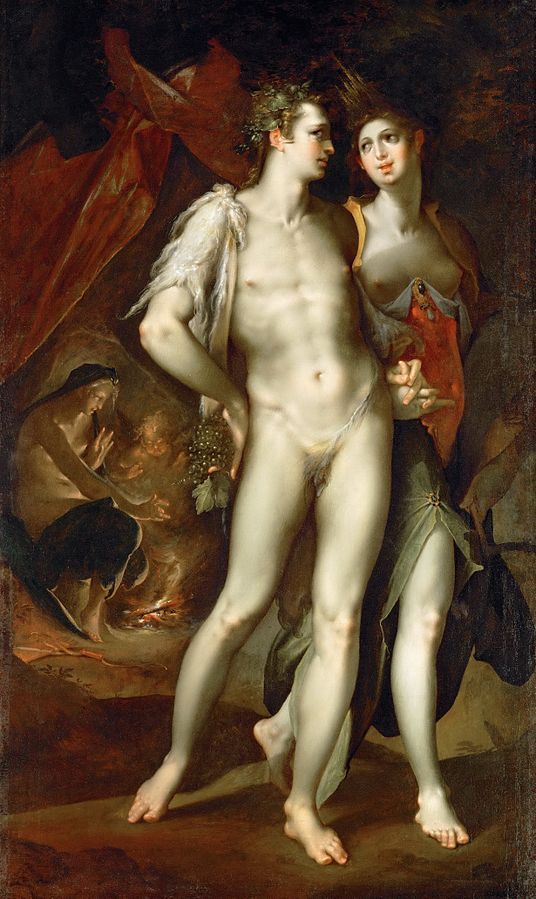
Bartholomäus Spranger, Sine Cerere et Baccho friget Venus, ca. 1590, oil on canvas, 161.5 x 100 cm, Kunsthistorisches Museum, Vienna
Source: Wikimedia Commons
The Latin proverb serving as title for the painting can be translated as “Without Ceres and Bacchus, Venus freezes” and is based on a quotation by the Roman comedian Terence. It inspired several paintings of Northern Mannerism and Baroque, in which its basic meaning (’love cannot thrive without food and wine’) is illustrated in a sometimes more, sometimes less moralizing way (Source: Wikipedia).
#yeah looking this up on wikipedia like a professional...#but I actually remembered this from one of my lectures#at least the core of it#but I wanted to give some kind of source so#yeah#art#painting#bartholomäus spranger#sine cerere et baccho friget venus#1590s#16th century#16th century art#16th century painting#allegorical painting#allegory#mannerism#northern mannerism#mannerist art#mannerist painting#flemish painter#ceres#bacchus#venus#demeter#dionysus#aphrodite
5 notes
·
View notes
Text

An Allegory Of The Transience Of Earthly Beauty And Love
Artist: Jacob De Backer (Flemish, 1540-1600)
#allegorical art#beauty#love#transsience#16th century painting#jacob de backer#flemish painter#european#landscape#symbolism#death#angel#men#woman
0 notes
Text
What are Campanes ?

In part V of my article on the bedchamber I mentioned campane ornaments several time, without ever explaining what they are, in this post i will take the time to clarify that relatively obscure yet very popular type of ornamentation.
Campane ornaments, characterized by their distinctive bell-like shapes with tassels, are decorative motifs that bring rhythm and elegance to architectural and interior designs. These ornaments, typically arranged in repeating patterns along the edges of canopies, cornices, and valences, resemble stylized bells suspended in a linear formation. Their formal beauty made them a popular decorative choice across Europe, particularly in France, where they became symbols of opulence and grandeur during the reign of Louis XIV.
The origins of campane motifs can be traced at least to the 16th-century in Flemish Renaissance art, where early forms of these bell-shaped ornaments began appearing as decorative borders of canopies(fig 1).

Fig 1 : "Ester e Assuero," 16th-century Mannerist painter from Antwerp, oil on panel, 99 x 136.5 cm, Zambeccari Collection, Inventory No. 204, Pinacoteca Nazionale di Bologna
At the same period they can be seen in certain fashion ornaments, for instance around the knee of some of the heroic armours, designed to be references for the brass statues representing Emperor Maximilian's ancestors guarding his tomb (fig 2)

Fig 2 :Kölderer’s drawing from 152211 (Wien, Österreichische Nationalbibliothek, Cod. 8329, fol. 15)
By the second half of the 17th century, campane ornaments had spread widely across Europe, reaching peak popularity and becoming synonymous with Baroque decor. France embraced campane motifs with particular enthusiasm. They became integral to the decorative vocabulary of the French court and the broader Louis XIV aesthetic. In fact, the motifs became so prevalent that Swedish diplomat Daniel Cronström who was in France at the time wrote to Swedish royal architect Nicodemus Tessin in 1695, observing :
"The campane ornaments, made and trimmed, are now so much in fashion that one sees almost nothing else [Les campanes faites et gallonées sont maintenant si fort à la mode qu’on ne voit quasi que cela.]"
— Daniel Cronström to Nicodemus Tessin, January 7, 1695
Applications in French and European Decor
Architectural and Decorative Applications
Campane ornaments quickly became a feature in grand architectural settings, with Versailles as a prime example. On the cour de marbre façade of the palace, the upper cornice is lined with a continuous row of gilded campane motifs, creating a rhythmic elegance to the roofline and enhancing the palace’s imposing silhouette (fig. 3 and 4).

Fig 3 :Élévation de la façade nord sur la cour de Marbre et sur la Cour royale. Coupe sur la partie médiane, after 1682 AN O/1/1768/A, dossier 1, n°1

Fig 4 : Palace of Versailles drone view of the roofs on the cour de marbre facade.
They were also used in architectural interiors, where they added a rhythmic and opulent touch to cornices and molding. At the Hôtel de Chevreuse recreated in the Louvre (fig. 5), the campane motifs line the upper edge of the room’s panels, creating a visual continuity that highlights the room’s refinement, and seperation between the space of the alcove and te rest of the room.
In the King’s bedchamber at Versailles, campane ornaments also appear on the cornice that divides the room from its open attic (Fig. 6). Here, individual campane pieces punctuate the cornice, reinforcing the room’s formal symmetry and creating a unified aesthetic with the bed canopy below. This architectural application of campane motifs enhances the decorative richness of the space and underscores the room’s ceremonial significance, where every detail contributes to the regal atmosphere.

Fig 5 : Salle 622, Louvre Museum, originally the Parade Bedchamber of the Hôtel de Chevreuse.

Fig 6: detail of the cornice of the central salon in Versailles, who became the King's Grand Bedchamber in 1701.
Furniture and Coaches
Beyond architecture, campane ornaments adorned ceremonial furniture and royal coaches, reinforcing their association with prestige and authority. In Entrée à Arras by Adam-Frans van der Meulen (fig. 7), the canopy of Louis XIV’s royal coach is lined with campane valences, demonstrating how these ornaments were used to convey regal dignity even in mobile spaces.

Fig 7 :Detail of Entrée à Arras de Louis XIV et de Marie-Thérèse, 27 juillet 1667," Adam-Frans Van der Meulen, oil on canvas, 1680-1685, 232 x 331 cm, Château de Versailles, MV 6057
Printed Works
The influence of campane ornaments extended into printed works as well. In the 1669 engraving L'audience royale donnée aux nations étrangères by Nicolas I de Larmessin (fig. 8), campane motifs frame key elements around Louis XIV, emphasizing the structured hierarchy and formality of the French court. This engraving shows how campane ornaments permeated different artistic mediums, symbolizing authority in both the real and the representational worlds.

Fig 8 :L'audience royale donnée aux nations étrangères, almanach 1669," Nicolas I de Larmessin, engraving, edited by Pierre Bertrand, 1669, Musée du Louvre, Paris.
Adoption Across Europe: Sweden and Germany
The popularity of campane ornaments wasn’t confined to France; they became fashionable across Europe, especially among designers who admired the grandeur of French decor. For example, Daniel Cronström and Nicodemus Tessin, influential Swedish designers, corresponded extensively about incorporating French styles into Swedish architecture. Cronström’s aforementioned letter reflects this enthusiasm, showing that campane ornaments were a pan-European trend embraced by Francophile designers.
In Germany, campane ornaments also found a place in the Margravial Opera House in Bayreuth, where a grandcanopy is adorned with these motifs (Fig. 9). This example demonstrates the cross-cultural appeal of campane ornaments.

Fig 9 : Detail of the canopy at Margravial Opera House in Bayreuth
Campane Valences on Royal Beds
The ultimate prestige of campane ornaments lies in their use as valences on royal beds, transforming these canopies into symbols of authority and ceremony. In Louis XIV's France, royal beds were not merely functional pieces but ceremonial centers where kings and queens held court, making them a focal point of royal power.
Examples in Royal Bedchambers
Campane valences on royal beds can be seen in early examples, such as Louis XIV’s bed at Trianon (circa 1700, Fig. 10) and his bedchamber at Marly (1692, Fig. 11). These valences framed the bed, accentuating its importance and creating a sense of regality around the sleeping area. The presence of campane ornaments on these beds marked them as spaces of prestige, emphasizing the central role of the monarch’s bedchamber in court life.

Fig 10 :BnF, Dept. Est. FOL-VA-78 (G, 2)

Fig 11 :BnF, Dep. Est. RESERVE HA-18 (40)-FOL
The 1701 King’s Bedchamber at Versailles
One of the most iconic uses of campane valences on a royal bed is found in the 1701 bedchamber at Versailles (fig. 12, 13 and 14). Here, the bed’s canopy was adorned with an intricate campane valence, framing the area where Louis XIV conducted his lever and coucher ceremonies. These daily rituals, in which courtiers observed the king’s rising and retiring, were significant court events. The campane valences on this bed reinforced the ceremonial function of the space, creating a structured grandeur around the king and emphasizing his authority.

Fig 12 : Drawing of the King's bedchamber(Louis XIV) in Versailles(after 1701) National Museum, Stockholm, NMH CC 174

Fig 13 :François Marot, "Institution de l'ordre militaire de Saint-Louis, 10 mai 1695," 1710, oil on canvas, Château de Versailles, Inventory No. MV 2149.

Fig 14 : Mention of the campane valences in the description of set 1881 present since 1701 in the King's grand bedchamber AN O1 3446 fº 381 vº
Transition to Festoons in the 18th Century
By the end of Louis XIV's reign, changing tastes led to the gradual replacement of campane valences with festoon-shaped valences, as seen in the 1714 bedchamber at Fontainebleau (Fig. 15). This shift reflected the emergence of the Rococo style’s preference for softer, more organic forms. Although campane ornaments were no longer in fashion, their legacy as symbols of royal power and opulence remained.

Fig 15 : Louis XIV reçoit à Fontainebleau le prince-électeur de Saxe, 27 septembre 1714, Louis de Silvestre and Hyacinthe Rigaud, oil on canvas, 1715, 120 x 155 cm, Château de Versailles, MV 4344
29 notes
·
View notes
Text

Christ at the Column
Artist: Denys Calvaert (Flemish, 1540-1619)
Date: c. 1578-1580
Medium: Oil on Panel
Collection: Clark Art Institute, Williamstown, MA, United States
#christian art#christianity#flagellation of christ#column#architecture#soldiers#passion of jesus#holy bible#savior of the world#passion of the christ#suffering#mockery#denys calvaert#flemish painter#16th century painting#oil on panel
10 notes
·
View notes
Text

Jan Brueghel l'Ancien - La descente de Christ dans les Limbes (1597)
#art#painting#peinture#oil painting#jan brueghel the elder#16th century#hell#limbo#enfer#descent of christ into limbo#demons#religious art#christian art#classical art#flemish art#flemish painter
7 notes
·
View notes
Text

The Hunters in the Snow (1565) 🎨 Pieter Bruegel the Elder 🏛️ Kunsthistorisches Museum Wien 📍 Vienna, Austria
In the late 16th century, the Antwerp banker Niclaes Jongelinck owned one of the most important painting collections in the Netherlands. He commissioned Bruegel to create a series of six seasonal paintings, the last of which is shown here. The series also included: Gloomy Day (Early Spring; KHM, GG 1837), Spring (now lost); Hay-Harvest (Early Summer; Nelahozeves Castle, Czech Republic, Lobkowitz Collection); The Harvesters (Late Summer; New York, Metropolitan Museum of Art); Return of the Herd (Autumn; KHM, GG 1018). For the composition of this series, Bruegel, who today is regarded as the most progressive landscape painter of the 16th century, followed an older tradition that divided the year, beginning on 1 March, into six unequally long seasons. What all the compositions have in common is the so-called balcony motif, i.e., the depiction of a hill in the foreground from which an overall view of the landscape unfolds. On top of the hill a group of hunters accompanied by a pack of dogs is seen, making their way back to the village below. Their catch is poor: a single fox dangling from the spear the hunter on the left carries on his shoulder. To the hunter’s left, Bruegel added a motif that had been used forquire some time in book illumination for depicting the month of December: the preparations for singeing a pig over an open fire outside a building. The damaged sign hanging above them reveals the name of the inn: “dit is inden Hert”, meaning “To the Deer” – a well-aimed passing shot. Entertaining details, such as the people ice-skating on the frozen lakes, have contributed to the painting’s enormous popularity. However, it does not owe its significance in art history to its details but rather to the overall impression conveyed by the coloration and composition. With virtuosity and consistency Bruegel evokes the impression of cold: white, blue-green and brown are the dominant colours. The precise silhouette of the trees, the frozen mill-wheel at the lower right and the icy surface of the snow revealed by the hunters’ footprints blend together to convey the fundamental characteristics of winter. The scene is an invented, universally formulated landscape: the combination of a chain of Alpine mountains with Flemish architecture renders pointless any search for reality.
#The Hunters In The Snow#Pieter Bruegel the Elder#Kunsthistorisches Museum Wien#Vienna#Austria#Renaissance#Northern Renaissance#Dutch Renaissance#Flemish Renaissance#art#artwork#art history#Jagers in de Sneeuw#flemish#oil on wood#oil painting#painting#Twelve Months#genre painting#Flemish Mannerism
48 notes
·
View notes